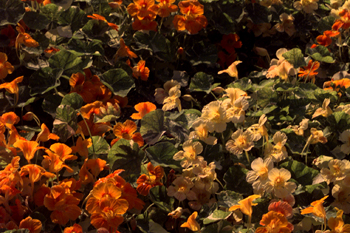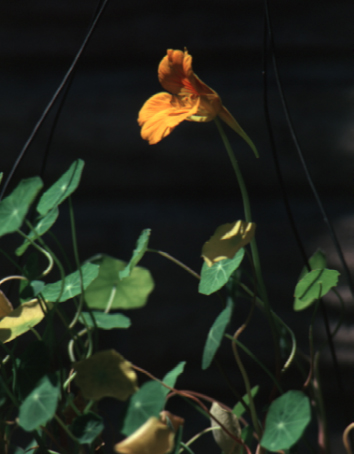
Adaptations
To many people, plants are similar to rocks; they blend into the background and don't do much of anything. This could not be less true! Plants have extensive sensory systems that make each individual able to adapt to the current environment. Other plants like the avocado, have unique adaptations as well. One main adaptation that nasturtium exhibits is photomorphogenesis which is the change in growth form due to exposure to light. When exposed to a large amount of sunlight the leaves grow thick to reduce surface area and conserve water. On the other side if the plant is growing in a shaded area the leaves develop to be much thinner to allow for greater photosynthesis. Nasturtium also has the capability to move towards the light. No, this plant cannot walk, but it is able to position itself to have the leaves and flower face the light to receive as much light (energy) as possible. The pictures directly below are an example of this type of repositioning. Notice how the leaves and petals are all facing in the direction of the sunlight.
Another adaptation in nasturtium is gravitropism, which is the ability to sense and utilize the force of gravity. All plants use this mechanism throughout their life cycles, starting with the seed germinating and the rood growing down in the direction of the gravitational pull. Nasturtium uses this mechanism as an adaptation to achieve optimal sunlight for optimal growth. this is evident especially in the climbing varieties of nasturtium. As can be expected from the name, this type of plant is known for climbing up fences and trellises. However, not many people realize that the plant is actually doing this as a means of survival. On the ground level, the plant risks being in the shadow of larger plants and objects. by using its sensory systems, nasturtium is able to react to sunlight and gravity and grow in a direction that will ensure enough light to sustain the plant.




